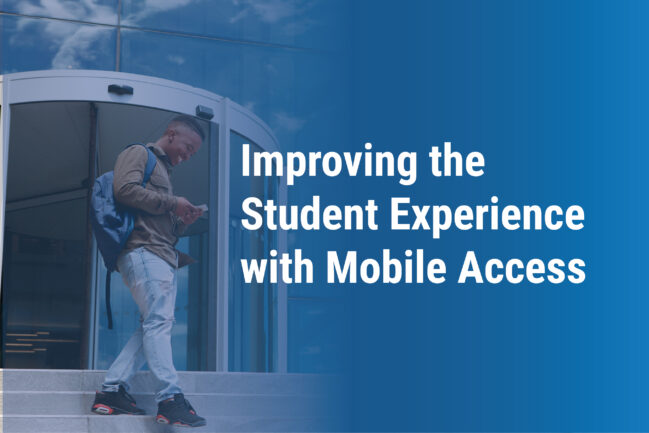With universities always looking to improve the student experience, mobile access control may be just what’s needed.
In this post, we’re taking a look at how implementing mobile access control can improve the student experience in 2023 and beyond. But first…
The biggest access challenge students face in 2023
Education establishments use access control systems to grant staff, students and visitors secure entry to their buildings. However, as a result of the global chip shortage, these establishments face a real threat.
The chip shortage has led to huge delays in the production and shipping of access control cards, creating a genuine risk that students may not receive their cards come enrolment. This would have detrimental effects, leaving new students with no way to securely enter the building.
Mobile access control is the secure solution. And with enrolment mere months away, it’s important that security personnel act fast.
Read more: How mobile access solves the education sector’s card shortage dilemma
The growing need for convenience in a mobile-first world
In the age of urgency where things can be researched, downloaded and shared within seconds, students and young people have come to expect this same level of convenience in all that they do.
From the ability to stream videos to pay for products and services with Apple and Google Play, smartphones offer it all in 2023.
And with mobile access allowing students to unlock doors with their mobile devices, it has become the latest addition to the modern student’s digital wallet.
Combining security and convenience
Mobile access allows students to easily and securely access campus from the palm of their hand.
As a great example of frictionless access control, mobile access ensures students no longer have to stop and search through their bags to find their physical cards. Instead, they can simply tap their phone in one swift movement and head straight to their lecture.
The modern solution is much more secure than outdated access methods such as key cards and fobs, as it uses advanced technology to ensure mobile credentials cannot be cloned.
What’s more, security administrators can carry out live audit trails and edit, disable and revoke credentials remotely. This way, unauthorised visitors will be kept away, and will be unable to cause harm.
But wait, there’s more…
If looking to further strengthen security, managers can implement 2-factor authentication. This would involve using an additional verification method.
For example, students may use mobile access control to enter the campus, and use photo ID cards to confirm their identity if required. This way, photo ID cards can provide instant visual security, especially if already on display using lanyards.
With new procedures constantly being put in place to grant students convenience, it is essential that security processes evolve with them.
Modern access for the modern student
Mobile access control makes access easy. In 2023, almost all students carry their phones with them everywhere they go.
Therefore, mobile access is the logical step forward, for both students and educational institutions.
What’s more, allowing students to unlock doors with their phones will undoubtedly enhance the student experience, increase campus security and launch your educational establishment into the mobile-first world.
The Experts in Photo ID & Access Control
Over the past 3 decades, we’ve helped over 25,000 organisations strengthen their physical security systems. We’d love to help you, too.
Get in touch on 0800 988 2095 to discuss how you can switch to mobile access and improve the student experience today. We hope to speak to you soon.
Alternatively, download our free mobile access eBook today to find out more.

